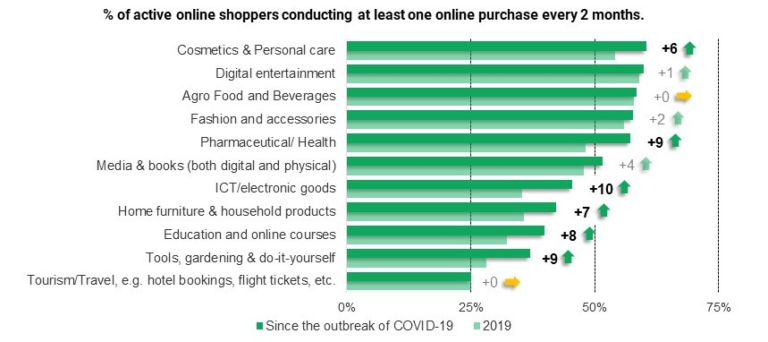If 2020 has taught us anything, is to be prepared. With the whirlwind of unexpectancy that the pandemic has unleashed on the world, only those who have tapped into the power of creativity and resilience reaped the benefits of consumers who suddenly had more time to buy any and everything.
Many mompreneurs experienced job loss, depression and anxiety which is understandable. Realities changed quickly, and many of us were not able to cope with the pressures of working from home and becoming teachers. According to ABC News, “Researchers from the University of Alberta interviewed 900 new mothers and found that 40.7% of new moms had depressive symptoms compared to 15% before the pandemic. The study also said that 72% of new mothers felt moderate to high anxiety, a 43% increase from the number of new mothers reporting anxiety before the pandemic.”
Staying at home has its challenges, but I want to share 5 steps to developing a stay at home business idea in 2021. Finding the opportunities to increase your income is even greater because of higher demand through remote and online platforms.
This blog post contains affiliate links, meaning, at no cost to you, I will earn a commission if you click through and make a purchase.
Step 1 – Find the problems
The best strategy is to start with the top problem you have as a mom. I had a major problem of having too many journals, notebooks and planners. I was also spending a lot of time online, which was also filled with news and articles about the pandemic and racial injustice; increasing my anxiety. I wanted a planner that had sections for all the different areas of my life that would allow me to be less on screens. So I created the Ultimate Mompreneur Planner.
Many of the products we can’t do without as moms were created from the unique problems we have. I know I can’t do without my Magic Bullet, Pressure Cooker or hair detangler. Yes, all of these products were created to solve specific problems. Write down the top five (5) problems you experience.
Step 2 – Find which problem is easiest for you to solve
The next step would be for you to start identifying which of those top five problems would be the easiest for you to solve. We all have talents and skills that allow us to be in our element. Think about what you can do effortlessly. Ask your family and friends what they think you are great at. Most times, your passion can easily be identified. Compare your results with the top five problems. Is there any link?
Choose the problem that has the least learning curve. You can develop a business idea faster when you don’t have to start learning about the product or service from scratch.
Step 3 – Find the ways to create the product or service
The next steps are to start thinking about the ways to develop the product or service. What do you need to get the business off the ground with the least amount of capital input. Ask yourself these questions:
- What resources do I need? Equipment, material, office space, support etc.
- How much do I already know about this product or service?
- Do I have the mental, emotional and financial capacity to take on this project?
- How much time do I need to develop this idea?
You may find this blog post helpful:
The answers to these questions are important because you always want to make sure that you minimize opportunities for anxiety. It is best to think about the highest quality possible. You want to emphasise on quality, as this is what will make your business stand out. It will also increase your chances of longevity in the business.
Here are the top 10 free and low cost tools to help run your start-up business.
Step 4 – Find the best ways to deliver the product or service
Once you have the answers to your questions and you are comfortable, it is then time to bring the business idea to life. You should find the best ways to deliver the product or service. Since the pandemic, global e-commerce sales jumped to $26.7 trillion in 2019, up 4% from 2018, according to the latest available estimates.

E-commerce platforms are the best ways to deliver your physical and digital products. There are also many online platforms that can help you deliver your service based business. Your marketing efforts must be carefully thought out and should match what your ideal client appreciates. Here are the top 10 E-Commerce platforms for Small Business in 2021.
Step 5 – Deliver excellent customer service
After you have set up your new business, the last and most important step is your customer service. Ensuring your customers are your #1 priority is essential to your business growth. Negative reviews will make it difficult for potential customers to place trust in your business. A dedicated team member that deals with customer questions and complaints is well worth the investment. You can outsource this team member at a low cost from your local virtual assistant business directory or from websites like Fiverr and Upwork.
I hope these steps would help you to take advantage of the great opportunity before you to increase your income. Leave a comment and let me know which step stood out to you the most.




